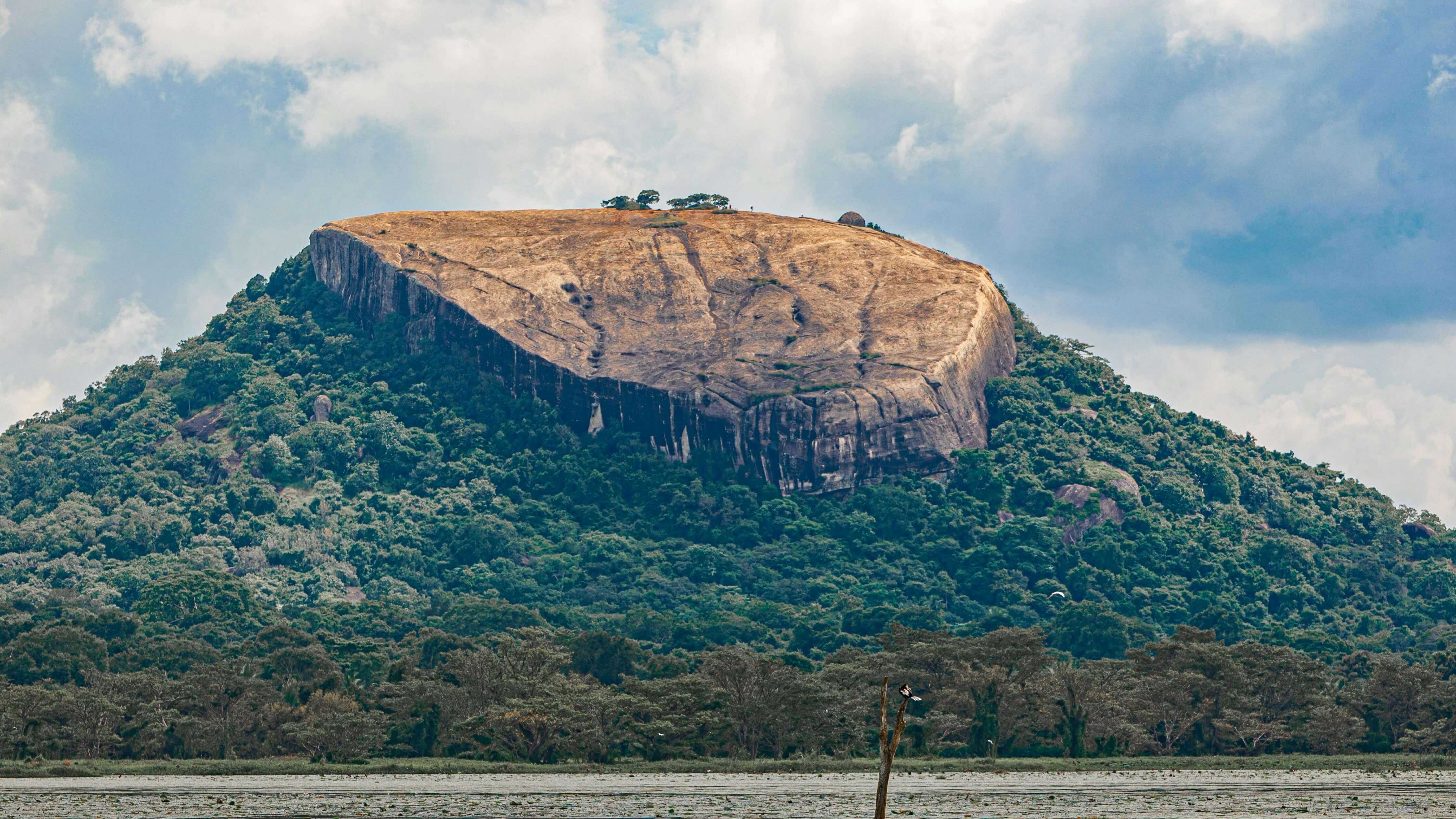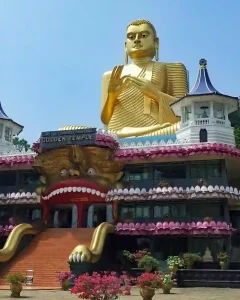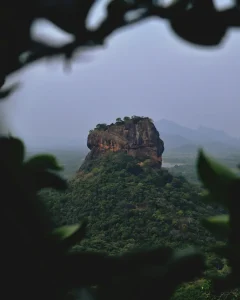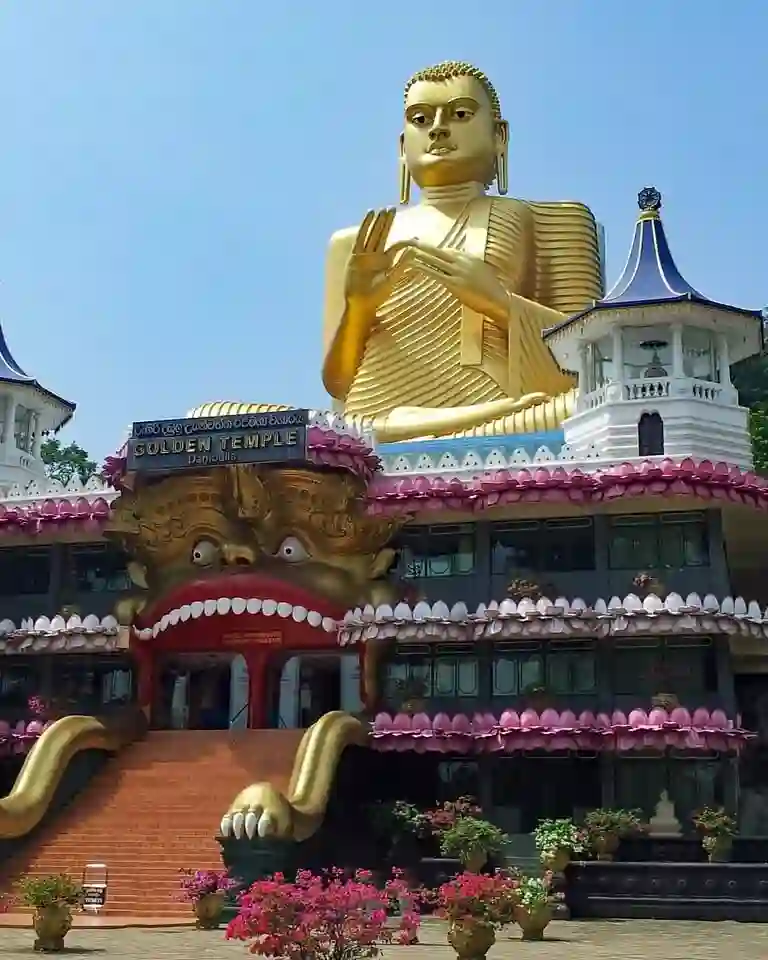
Heritage Triangle Cities
Dambulla
🏛️ UNESCO World Heritage Site
🕉️ Over 2,000 Years of History
🏞️ Gateway to Sigiriya: Just 15 km from the world-famous Sigiriya Rock Fortress.
🌿 Natural Wonders: Explore the serene Ironwood Forest (Namal Uyana) and the breathtaking Rose Quartz Mountain Range.
🛍️ Vibrant Local Markets: Experience the bustling Dambulla Economic Center, showcasing Sri Lanka’s agricultural richness.
INTroduction
Dambulla, nestled in the heart of Sri Lanka’s Cultural Triangle, is a city of immense historical and religious significance. Famous for the UNESCO World Heritage-listed Dambulla Cave Temple, this city has been a sanctuary for pilgrims for over 2,000 years. Its rich cultural heritage and serene landscapes make it an essential stop for travelers exploring Sri Lanka.
Dambulla is renowned not only for its sacred sites but also as a gateway to nearby attractions like the iconic Sigiriya Rock Fortress and the tranquil Ironwood Forest (Namal Uyana). Surrounded by lush greenery and vibrant local markets, Dambulla offers an unforgettable blend of spirituality, history, and natural beauty.
Historical Legacy
Dambulla’s cultural legacy is deeply intertwined with Sri Lanka’s Buddhist heritage, reflected in its ancient temples and artistic masterpieces. The city is best known for the Dambulla Cave Temple, a site of worship that dates back to the 1st century BCE. This temple complex, often called the Golden Temple of Dambulla, is the largest and most well-preserved cave temple in Sri Lanka.
The Cave Temple features:
- Over 150 statues of Buddha, along with murals covering 2,100 square meters.
- Five main caves, each adorned with intricate artwork that narrates the life of Buddha and significant Buddhist teachings.
- Ancient carvings and paintings commissioned by Sri Lankan kings to honor Buddhism’s influence on the island.
Dambulla’s role in Sri Lanka’s history extends beyond religion. As a strategic location, it served as a stronghold during periods of political turmoil. The city also played a vital role in promoting Sri Lanka’s art, culture, and architecture, earning its place as a key site in the country’s historical narrative.
Today, Dambulla’s cultural treasures stand as a testament to the artistic brilliance and spiritual devotion of ancient Sri Lankan civilizations, attracting visitors from around the world.
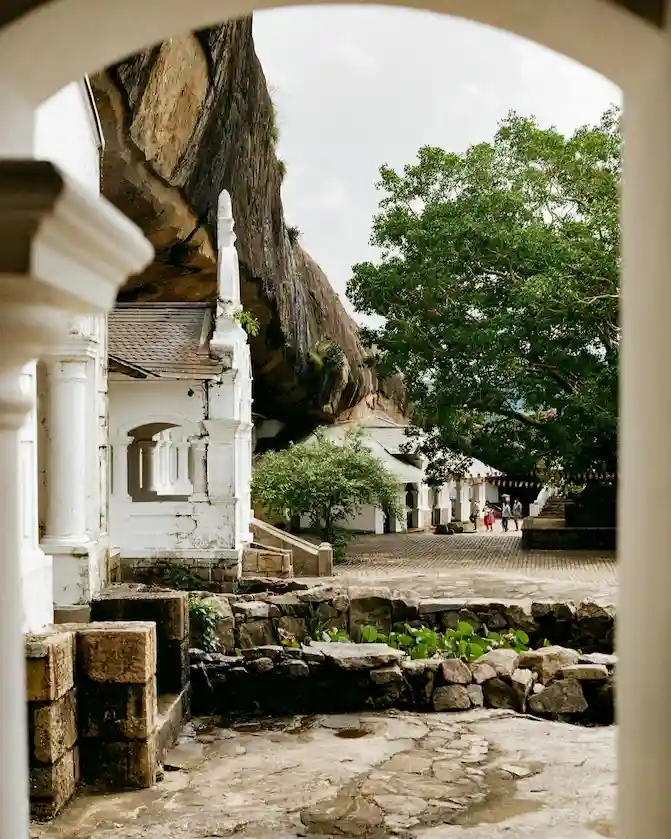
Things to Keep in Mind
Dress Code: Modest clothing is required when visiting temples (shoulders and knees covered).
Footwear: Shoes must be removed at temple entrances, so bring socks for comfort on hot surfaces.
Timing: Early morning visits are recommended to avoid crowds and heat.
Guides: Hiring a local guide can enhance your experience with insights into the history and significance of Dambulla’s landmarks.
When Should You Visit Dambulla City?
Cultural and Religious Observances
- Poya Days: Every full moon day, Dambulla’s Cave Temple becomes vibrant with rituals like offering flowers, lighting oil lamps, and chanting prayers. A serene yet spiritual experience.
- Vesak (May): Celebrates the birth, enlightenment, and passing of Lord Buddha. The Cave Temple and surrounding areas are adorned with lanterns, lights, and devotees engaging in alms-giving and meditative practices.
- Poson (June): Marks the arrival of Buddhism in Sri Lanka. Pilgrims visit the Cave Temple for offerings, prayers, and cultural celebrations, making it a special time to experience the site.
Note: Visiting during festivals offers a rich cultural experience, but expect larger crowds and higher accommodation costs
Dry Season (February–September)
- February to early May: Generally hot and dry, with lower rainfall and sunny days
- June to September: Also relatively dry, but temperatures can be very high, so plan for early morning or late afternoon site visits.
Rainy Season (October–January)
Dambulla city area experiences heavier rainfall during these months due to the northeast monsoon. You can still visit, but be prepared for occasional downpours that might limit sightseeing time.
Getting to Dambulla: Travel Options and Tips
By Train
- Trains do not directly connect to Dambulla, but nearby stations like Habarana or Matale are accessible.
- Travel Tip: From these stations, take a taxi or bus to reach Dambulla, which is about 30–45 minutes away.
By Bus
- Regular Bus Routes: Buses to Dambulla operate frequently from major cities such as Colombo, Kandy, Anuradhapura, and Kurunegala. These buses are a budget-friendly option for travelers.
- Travel Duration:
- From Colombo: 4–5 hours.
- From Kandy: 1.5–2 hours.
- From Anuradhapura: 2–3 hours.
By Car or Taxi
Hiring a private car or taxi is the most convenient way to travel to Dambulla, especially for families or groups.
- From Colombo: About a 3.5–4-hour drive (148 km) via the A1 and A6 highways.
- From Kandy: Approximately 1.5 hours (72 km) through scenic routes.
- From Sigiriya: A short 20-minute drive (15 km), making it an easy day trip.
- Cost: Expect around LKR 10,000–15,000 for a one-way ride from Colombo.
- Pro Tip: Use trusted services like PickMe, Uber, or local tour operators for a reliable journey.
Tips for Travelers
- Peak Travel Times: Avoid traveling during public holidays or long weekends as trains and buses can be crowded.
- Early Bookings: Reserve train or bus tickets early, especially for first-class train seats or luxury bus options.
- Local Knowledge: For the best experience, consider hiring a local guide to help navigate the city and its attractions.
interactive MAP
Explore More Heritage Triangle Cities!
Don’t stop at Dambulla—uncover the marvels of Sri Lanka’s ancient heritage. Choose your next destination.
Select Your Next City Now! 👉

